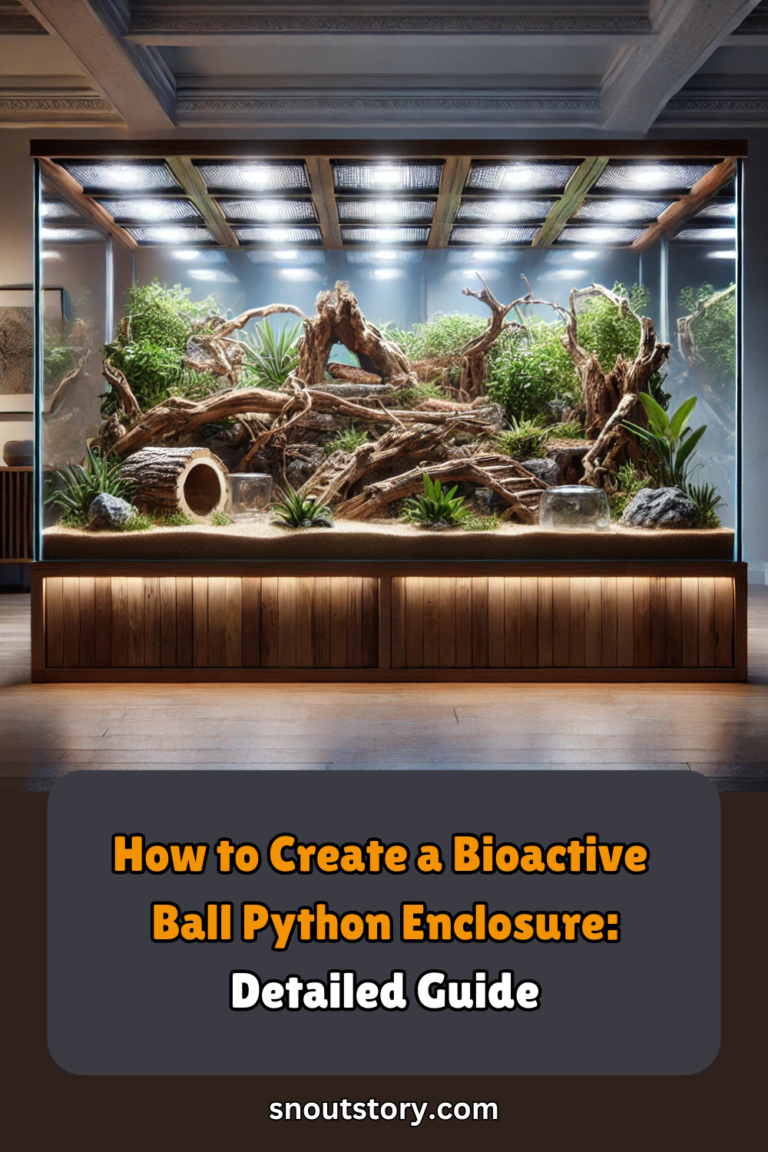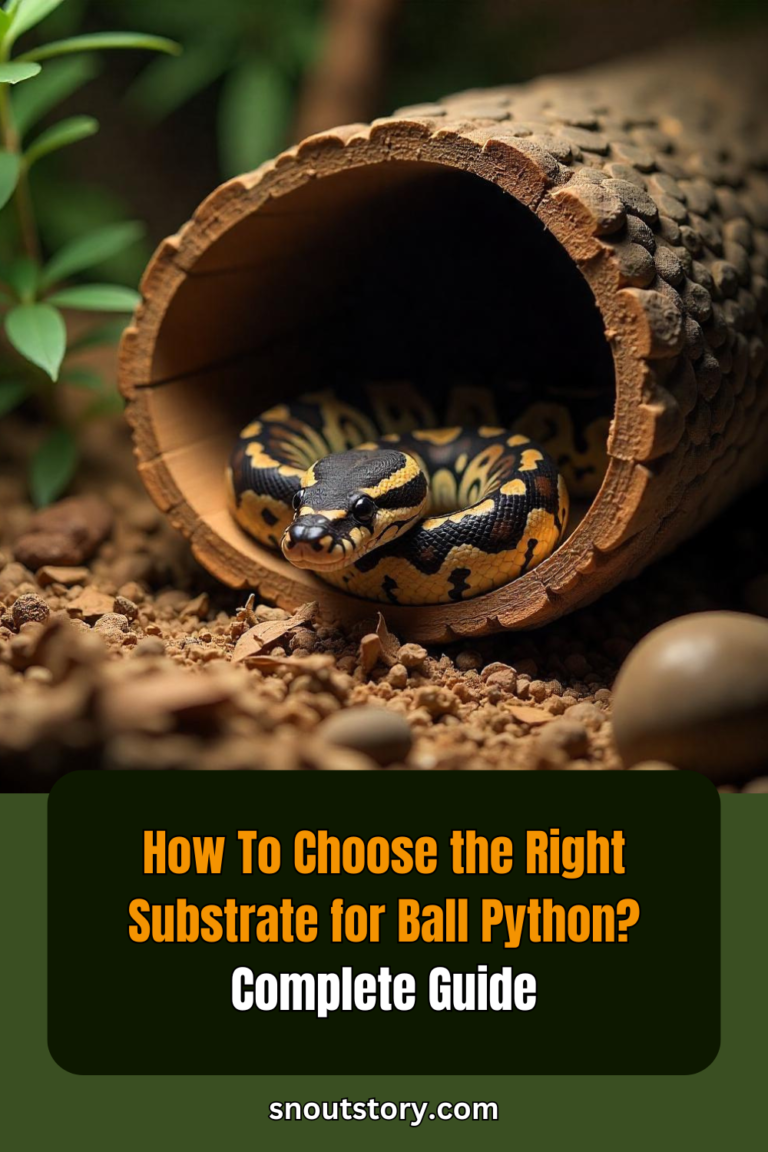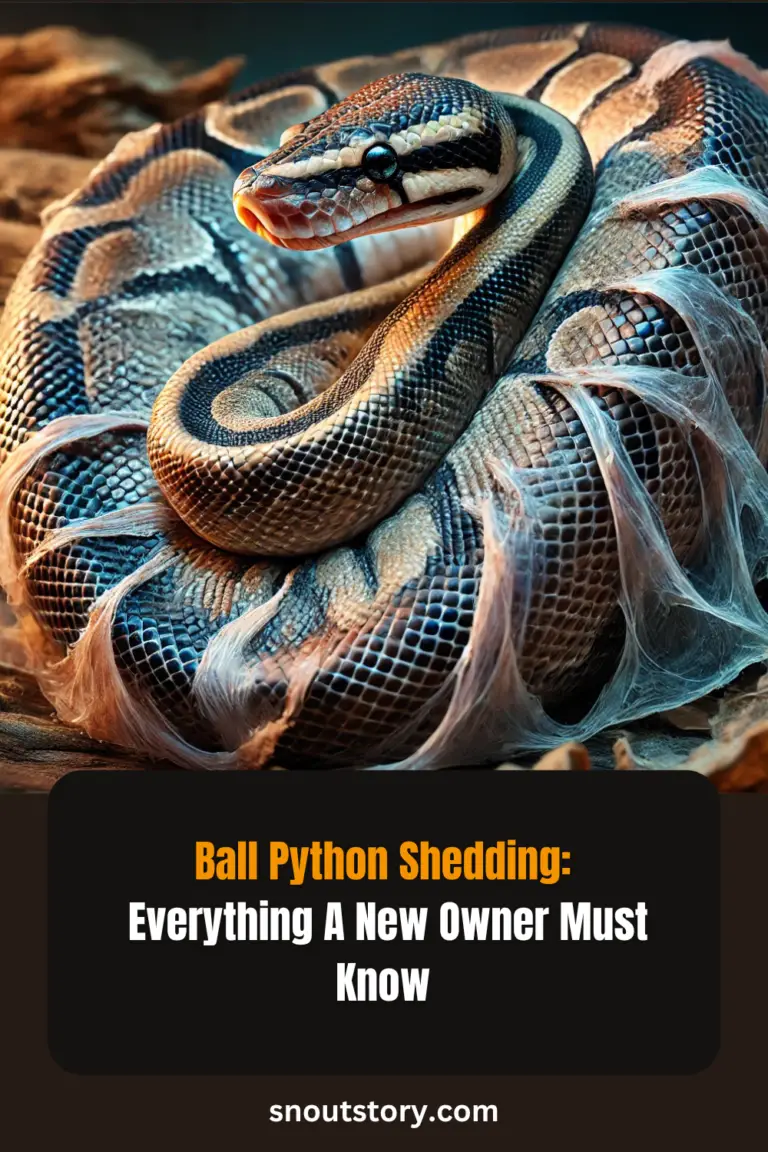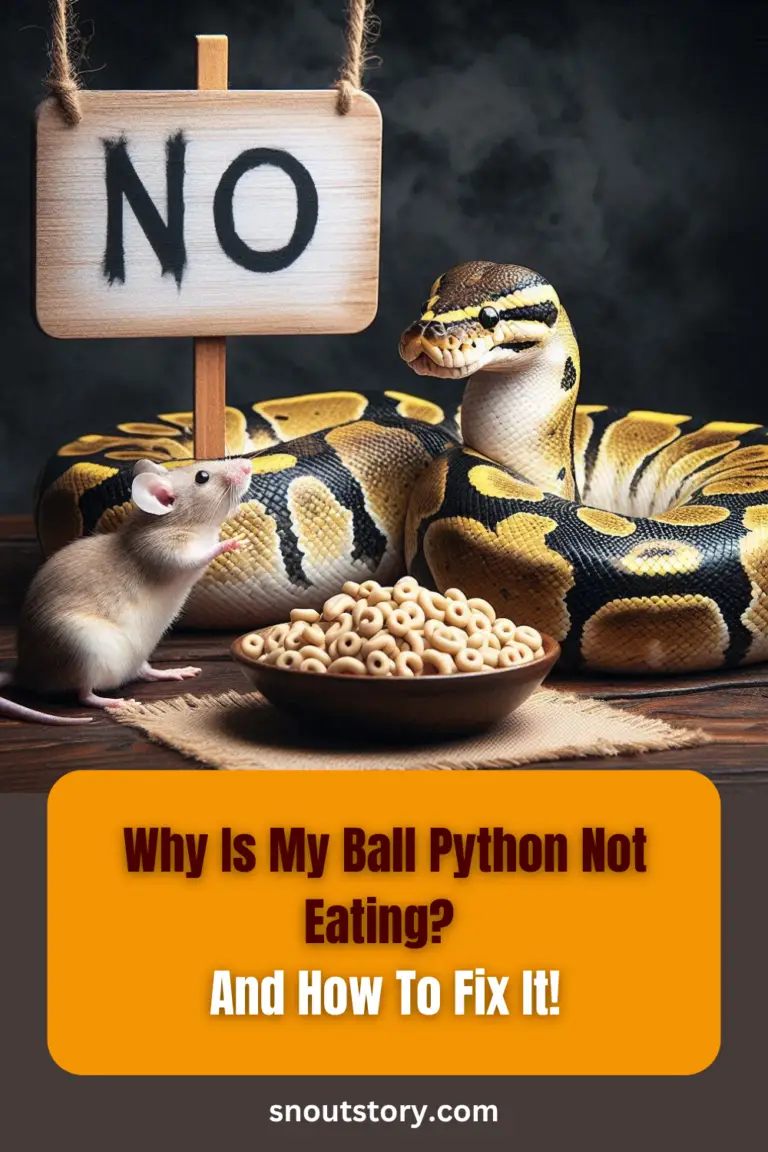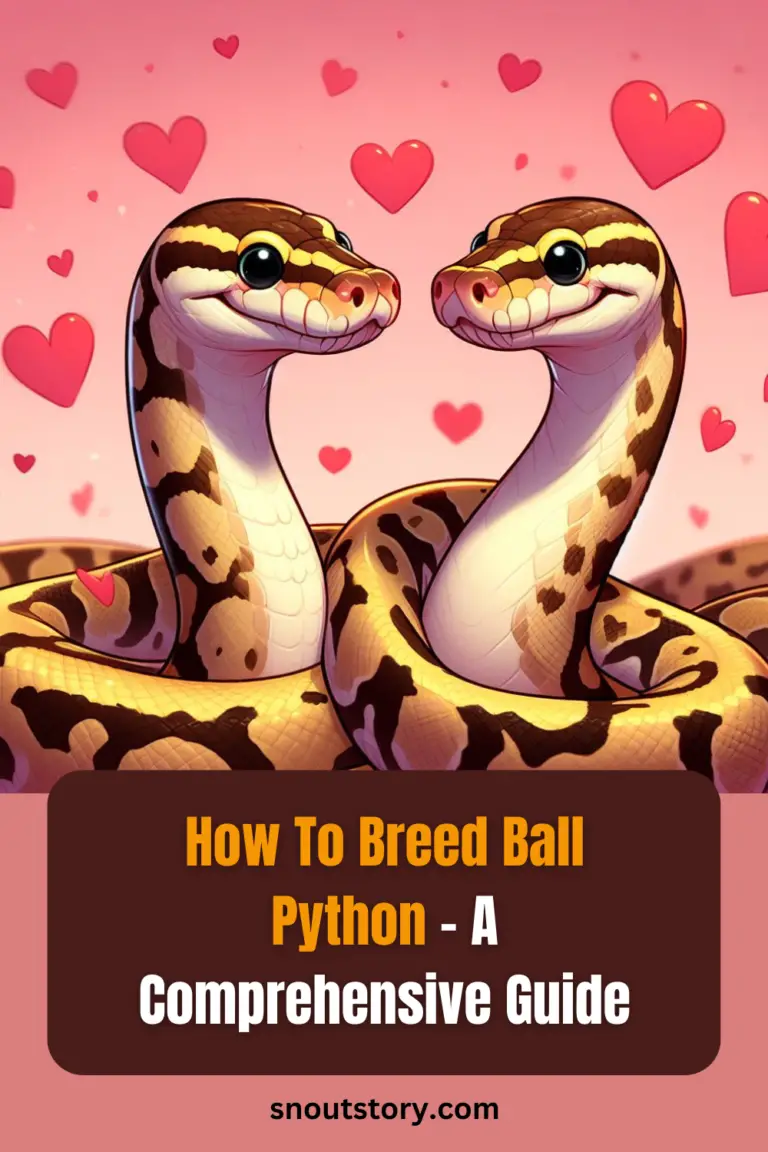A popular kind of pet snake, ball pythons are renowned for their calm demeanour and a vast range of color and pattern variations. Although there are numerous ball python morphs, some are more uncommon and difficult to locate than others. If you’re a fan of ball pythons or are thinking about adding one to your collection, you should become familiar with these uncommon and distinctive mutations.
Here’s The List of 11 Unique and Rare Ball Python Morphs
11) Dreamsicle Ball Python:

The piebald gene and the lavender albino gene are the two genes that make up the Dreamsicle Ball python morph. The morph is also known as the Lavender Albino Piebald Ball Python because of this.
It is a recessive color mutation to be lavender albino. Although the mutant initially has a base color of lavender, it is nonetheless similar to regular albino. Their yellow pattern coloration tends to be stronger and more distinct than a typical albino, with rich golden-yellow undertones, and they have deep red eyes. The well-known all-white patches are added by the piebald gene.
Price: $2000-$3000
10) Banana Mimosa Ball Python:

The banana mimosa is one of the rarest ball python morphs available. It is almost tough to find. This designer morph is made up of several fundamental morphs. The co-dominant allele for banana ball morphology. As you can guess, the light brown spots on the snake’s back and side are replaced with banana yellow blotches as a result of the banana ball morph. The background has a pale brown tone. The champagne morph gene co-dominant and the ghost morph gene recessive combine to create the mimosa morph. The banana mimosa ball python has the banana ball python’s characteristic yellow blotches on a backdrop of light purple with a few dark speckles.
Price: $5000
9) Coral Glow Ball Python:

The coral glow ball python has vibrant orange and yellow skin with a purplish undertone. The reason the coral glow python is also known as a “banana” ball python is that as it ages, it begins to grow dark patches that resemble banana marks.
Price: $150-$300
8) Lavender Albino Ball Python:

A very distinctive color variation of the ball python is the lavender albino. With a light purple base color and yellow striping extending down the length of the body, they have a very distinctive and easily recognizable appearance. Although the level of purple in each specimen varies, the overall base hue is unmistakably purple or lavender.
Price: $200-$500
7) Mystic Potion Ball Python:

One of my personal favorites, the Mystic Potion Ball Python, is a breeder’s ideal morph because it is so uncommon and valuable. The Mystic Potion is an extremely stunning morph that was created by blending the similar-appearing co-dominant morphs Mystic and Mojave. Its dorsal side is a ghostly pale grey with a center stripe of darker grey.
Price: $400-700.
Currently you can’t find Mystic Potion Ball Python easily, but here’s the next best thing, and surely you don’t want to miss out on it. So get one ASAP!
Baby Super Mystic Ball Python (Live Delivery Guaranteed)

6) Scaleless Ball Python:

The Scaleless Ball Python, as its name suggests, is unlike most snake species in that it lacks scales across its whole body, except the ocular scales that protect its eyes. These snakes will have smooth skin but can still display the same colors and patterns as other ball pythons.
Price: $2000
5) Black-eyed Leucistic Ball Python:

The only significant difference between blue-eyed leucistic and black-eyed leucistic is the color of the eyes. They may have regions of normal pigmentation but are typically off-white to pure white in appearance.
Price: Around $700-$1000.
4) Ghost Ball Python:

Ghost Ball Python has a ghost gene, also known as hypo or hypomelanistic, which is a recessive gene. The snake’s scales have less black pigment, thanks to this recessive mutation. Ghost pythons come in a variety of varieties, but they all share a common appearance.
Even when they are not, Ghost Ball Pythons almost always appear to be shedding. They come in a range of hues, including yellow, green, brown, and gray. When these snakes shed, they frequently do so like albinos, which leaves them with faded dark colors and a faded head.
Price: $200 to $300
3) Ivory Ball Python:

The aesthetic of ivory ball pythons is exceptional, featuring beige, peach, and pearl tones. Ivory ball pythons lack the distinctive banding patterns that characterize regular ball pythons and have a uniform color. Two yellow ball pythons are crossed to get the ivory hue by breeders. Every double yellow belly combination has a 25% probability of producing ivory.
When you look closely at the ivory, you can notice the mild, gentle golden tones, however, this coloring varies from ivory to ivory. Ivories are often off-white with a pronounced yellow-to-peach line extending from the spine.
Price: $150 to $300
Get one now! Baby Ivory Ball Python (Live Delivery Guaranteed)

2) Piebald Ball Python:

Even though not rare as any other morph in this list, piebald has a high demand due to its exclusive and unique appearance. Your Piebald Ball Python might have any of the many colors and patterns that Ball Pythons come in. Your ball python is a Piebald because of significant areas that are entirely white. Some of the skin lacks color due to a recessive gene. Although it is uncommon in the wild, captive-bred ball pythons can easily produce it.
Price: $200 to $500
1) BumbleBee Ball Python:
The Bumble bee ball python is a designer morph, which means it is a combination of more than one trait. Because of its unique and bright design, the bumble bee ball python has a high demand nowadays. It is usually bright yellow in color with black patterns or vice-versa.
Price: $200-$300
Summary
Although collectors and breeders greatly prize these uncommon ball python morphs, it’s vital to keep in mind that they might carry a hefty price tag. If you’re thinking of buying one of these rare morphs for your collection, be ready to pay more and do your homework to make sure you’re obtaining a healthy, genetically sound animal. It’s crucial to keep in mind that choosing a ball python involves more considerations than just the morphs. Considerations including temperament, health, and general care are crucial.
If you love ball pythons or are thinking about adding one to your collection, consider purchasing one of these rare and special mutations. These morphs, which range from the Piebald to the Dreamsicle, are sure to impress and give a special touch of beauty and rarity to your collection.
Recommended
How to Create a Bioactive Ball Python Enclosure: Detailed Guide
12 Ball Python Enclosure Setup Ideas For Realistic Habitat
How To Choose the Right Substrate for Ball Python? Complete Guide
Ball Python Shedding: Everything A New Owner Must Know
Why Is My Ball Python Not Eating? And How To Fix It!
How To Breed Ball Python – A Comprehensive Guide

Vedant Narvekar is an experienced digital marketing expert with a profound love for nature and animals. With a career rooted in leveraging online platforms to drive engagement and promote meaningful causes, Vedant’s passion for animals inspired him to start Snout Story—a blog dedicated to educating people about pet keeping and sharing proper knowledge about caring for animals. Drawing on his expertise in digital marketing, Vedant utilizes his platform to advocate for responsible pet ownership, providing valuable insights on pet care, training, nutrition, and more. Through Snout Story, Vedant aims to empower pet lovers with the information they need to provide the best possible care for their furry companions, while also fostering a deeper appreciation for the natural world and the creatures that inhabit it.


